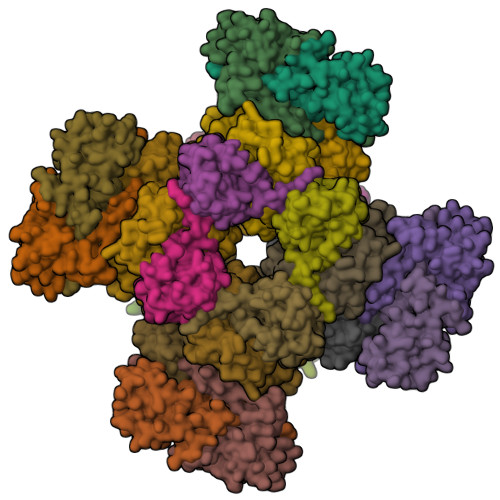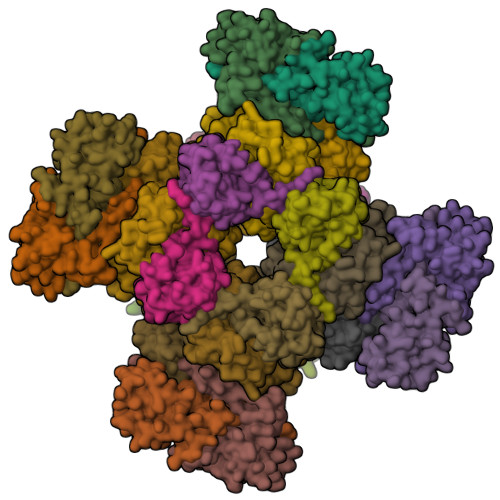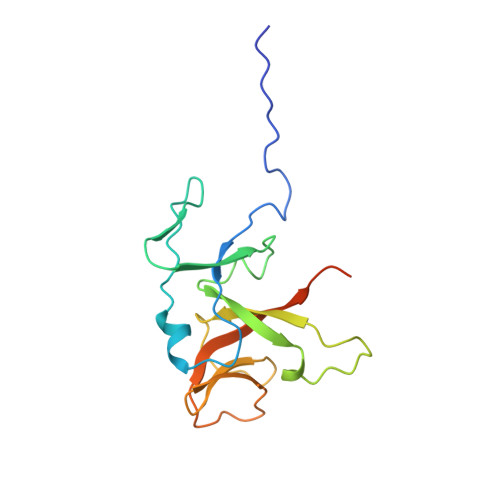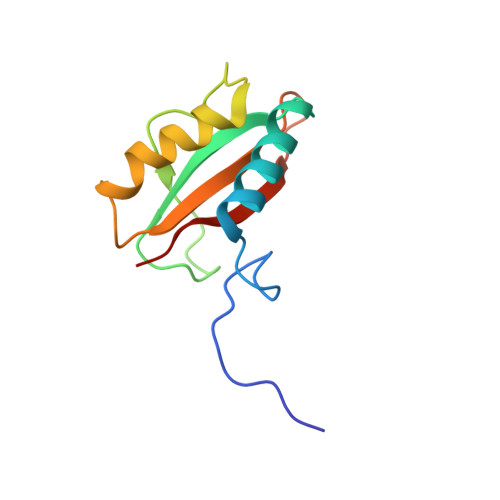Molecular basis for the assembly of RuBisCO assisted by the chaperone Raf1.
Xia, L.Y., Jiang, Y.L., Kong, W.W., Sun, H., Li, W.F., Chen, Y., Zhou, C.Z.(2020) Nat Plants 6: 708-717
- PubMed: 32451445
- DOI: https://doi.org/10.1038/s41477-020-0665-8
- Primary Citation of Related Structures:
6KKM, 6KKN, 6LRR, 6LRS - PubMed Abstract:
The folding and assembly of RuBisCO, the most abundant enzyme in nature, needs a series of chaperones, including the RuBisCO accumulation factor Raf1, which is highly conserved in cyanobacteria and plants. Here, we report the crystal structures of Raf1 from cyanobacteria Anabaena sp. PCC 7120 and its complex with RuBisCO large subunit RbcL. Structural analyses and biochemical assays reveal that each Raf1 dimer captures an RbcL dimer, with the C-terminal tail inserting into the catalytic pocket, and further mediates the assembly of RbcL dimers to form the octameric core of RuBisCO. Furthermore, the cryo-electron microscopy structures of the RbcL-Raf1-RbcS assembly intermediates enable us to see a dynamic assembly process from RbcL 8 Raf1 8 to the holoenzyme RbcL 8 RbcS 8 . In vitro assays also indicate that Raf1 can attenuate and reverse CcmM-mediated cyanobacterial RuBisCO condensation. Combined with previous findings, we propose a putative model for the assembly of cyanobacterial RuBisCO coordinated by the chaperone Raf1.
Organizational Affiliation:
Hefei National Laboratory for Physical Sciences at the Microscale and School of Life Sciences, University of Science and Technology of China, Hefei, China.


















